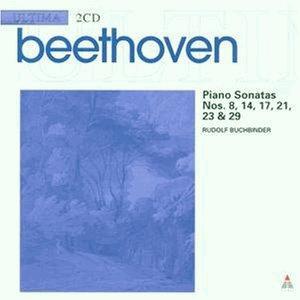
| Artist: | Ludwig van Beethoven |
| Title: | Piano Sonatas No. 8, 14, 17, 21, 23, 29 |
| Released: | 1980 |
| Label: | Teldec Classaics |
| Time: | 76:20 / 67:04 |
| Producer(s): | |
| Appears with: | |
| Category: | Classic |
| Rating: | ********.. (8/10) |
| Media type: | CD double |
| Purchase date: | 2001.11.26 |
| Price in €: | 10,83 |
| Web address: | www.teldec.com |